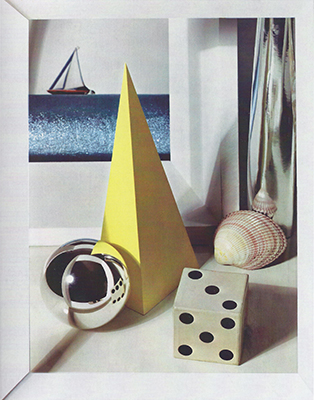Paul Outerbridge: Pioneer of color
This is the first in a series of five posts about some early color photographers. All five photographers in this series were working and exhibiting in color before the 1970s. Before the 1970s, color was considered the realm of commercial photography and snapshots, but as an art form, black-and-white was considered the only appropriate medium. I intend writing these articles chronologically, starting with American photographer, Paul Everard Outerbridge Jr.
Outerbridge lived from 1896 to 1958, and as a teenager, he worked as an artist and illustrator, including as a set designer. He began photography while in the U.S. Army, and then enrolled in the Clarence H. White School of Photography at Colombia University in New York in 1921. Clearly he was a quick learner, and within a year of commencing his study he had been published in Vanity Fair magazine. He and his wife moved to Paris in 1924 where he became friends with photographers such as Edward Steichen, Man Ray, and Berenice Abbot, and was socializing with artists such as Pablo Picasso, Marcel DuChamp, and composer Igor Stravinsky.
Outerbridge began experimenting with color in the late 1920s, and mastered a complex and expensive color process known as the “tri-color Carbro” subtractive process. In the 1930s, he estimated that each print cost $150 and took nine hours to process. His perfectionism made him reluctant to change over to Kodachrome transfers leaving his commercial work more expensive than his competitors, which in turn left him in financial difficulty.
Much of Outerbridge’s work falls into three categories: staged advertising images, still life, and nudes. Many of his nude images are quite remarkable, especially for their era and are well worth searching for on the web. He also created some images that included another photo as part of the image, such as the still life shown here.
 “Images de Deauville”, Paul Outerbridge Jr. (1936)
“Images de Deauville”, Paul Outerbridge Jr. (1936)
Image reproduced under “fair use” doctrine.
Sadly, Outerbridge’s work was not fully appreciated during his life time and he had trouble finding work as a photographer later in life. He did however make some interesting images of California and Mexico later in his life. Outerbridge died of lung cancer in October 1958. Fortunately his work was rediscovered and a significant body of his work is preserved by the J. Paul Getty Museum in Los Angeles.
Source: “Paul Outerbridge Command Performance”, by Paul Martineau, Getty Publications, 2009
